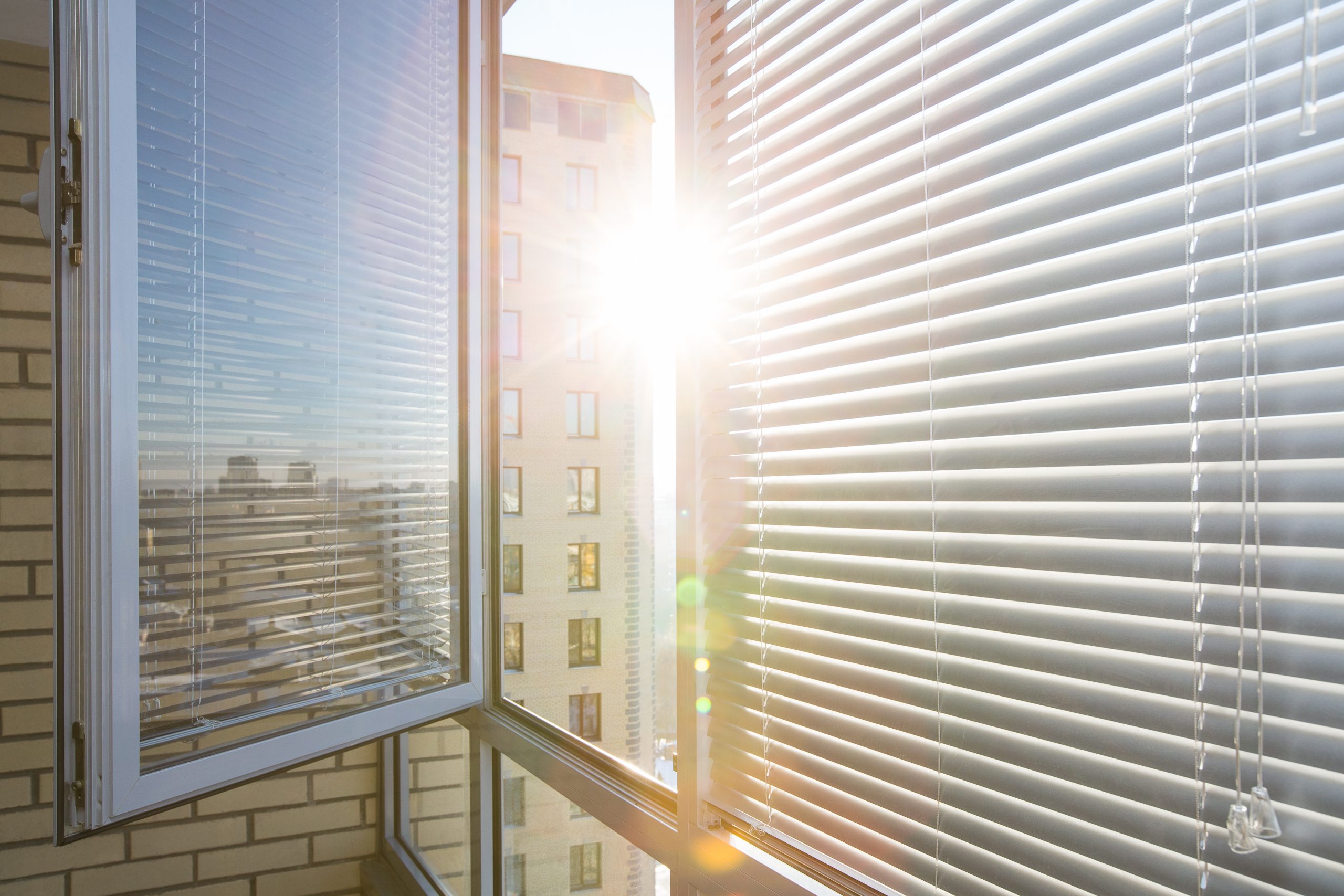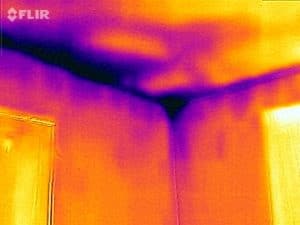As the UK summers grow increasingly warmer, finding sustainable methods to keep our homes cool is becoming more and more essential; yes, for comfort, but (fundamentally!) for the planet too. And let’s face it – cranking up the air conditioning isn’t always the most eco-friendly or cost-effective solution.
What are eco-conscious ways to keep your home cool? Use smart blinds, reflective window films, and natural ventilation to reduce heat. Add shade with plants, upgrade insulation, and opt for energy-efficient appliances. Passive design features and cool roofs also help lower temps; sustainably and affordably.
Fortunately, there really are numerous strategies to maintain a comfortable indoor temperature while reducing your carbon footprint. We’ve pulled together our 10 top eco-conscious ways to keep your home cool this summer in a handy tip sheet – enjoy!
1. Embrace smart window solutions
Windows are a primary source of heat gain during the summer months. Implementing smart window treatments can significantly reduce indoor temperatures. Two simple (and cost-friendly) ways that you can do this are:
- Install energy-efficient blinds or shades: Opt for cellular or thermal blinds that provide insulation against heat. Automated blinds with solar sensors can also adjust based on sunlight intensity, optimising indoor temperatures without manual intervention.
- Apply reflective window films: These nifty films can block a significant amount of solar heat, keeping your interiors cooler. They’re a cost-effective solution that doesn’t compromise natural light.
2. Optimise natural ventilation
It sounds simple, but harnessing natural airflow can be an effective (and often forgotten) way to cool your home without relying on energy-intensive appliances. Some of the best ways to utilise natural ventilation are:
- Night-time ventilation: Open windows during the cooler evening and early morning hours to allow fresh air in. Ensure to close them during the day to trap the cooler air inside.
- Cross-ventilation: Open windows on opposite sides of a room or house to create a cross-breeze, facilitating better air circulation.
3. Incorporate greenery for natural cooling
Who doesn’t love an excuse to buy more plants? The great thing about them is that not only do plants look and feel great, but they can serve as natural air conditioners, providing shade and releasing moisture into the air through transpiration.
- Plant shade trees: Strategically plant deciduous trees on the south and west sides of your home. They provide shade during the summer and allow sunlight during the winter after shedding leaves.
- Green roofs and walls: These not only insulate your home but also reduce the urban heat island effect, contributing to cooler surroundings.
4. Upgrade insulation
You might be surprised to read that proper insulation isn’t just for winter; it also plays a crucial role in keeping your home cool during the summer by preventing heat ingress. The key is to look at your loft and wall insulation. Ensure your attic and walls are well-insulated to reduce heat transfer. Our top tip is to make use of materials like reflective insulation that can deflect radiant heat, keeping interiors cooler.
YOU MIGHT BE INTERESTED IN: WHAT IS GRASS INSULATION?
5. Opt for energy-efficient appliances
You’ve probably already realised that traditional cooling appliances can be energy hogs. Switching to energy-efficient alternatives can make a significant difference. These include:
- Ceiling fans: They consume less energy than air conditioners and can make a room feel up to 4°C cooler. Ensure they’re set to rotate counterclockwise during the summer for optimal effect.
- Evaporative coolers: In dry climates, these coolers use water evaporation to lower air temperature, consuming less energy than traditional AC units.
6. Adopt passive cooling architectural elements
Passive cooling is a clever, low-impact way to regulate indoor temperatures without relying on energy-hungry systems. These architectural features use the natural movement of air and the principles of thermal dynamics to keep your space fresh and breathable, even during the hottest months.
- Windcatchers: These are traditional structures that capture and direct cooler breezes into buildings, reducing indoor temperatures without electricity.
- Solar chimneys: Grab hold of that beautiful solar energy to enhance natural ventilation, drawing hot air upwards and out, while pulling cooler air in.
7. Implement reflective roofing
Your roof is one of the most exposed parts of your home, and in the summer, it can become a massive heat trap. That’s where reflective roofing comes in. By using materials specifically designed to reflect more sunlight and absorb less heat, you can significantly reduce indoor temperatures and ease the burden on your cooling systems.
- Cool roofs: These are typically made from reflective paints, tiles, or shingles that bounce solar radiation back into the atmosphere. The result? A much cooler roof surface and a noticeably more comfortable interior. Even if you’re not ready to fully replace your roof, applying a reflective coating to your existing surface can still make a big difference, both in temperature and energy consumption.
Bonus: Some cool roofs also qualify for green home incentives or building certifications, making them a win-win for your wallet and the planet.
8. Minimise internal heat generation
It’s easy to forget that many of the appliances and habits we rely on every day can quietly heat up our homes from the inside out. If you want to stay cool without switching on the air con, reducing internal heat sources is a must.
- Limit heat-producing activities: Avoid using ovens, stovetops, and dryers during the warmest part of the day. Plan meals that don’t need cooking (think fresh salads, smoothies, or BBQs in the garden) and run appliances like dishwashers and washing machines at night when it’s cooler.
- Switch to LED lighting: Incandescent bulbs give off up to 90% of their energy as heat. LEDs, on the other hand, are far more efficient and emit barely any heat, making them the cooler (and greener) choice. Plus, they last longer and use less energy, ticking every sustainable box.
- Power down unused devices: Electronics such as TVs, computers, and gaming consoles generate heat even in standby mode. Switch them off fully when not in use, and you’ll feel the difference.
9. Leverage Smart Home technology
Smart technology isn’t just a luxury; it can be a game-changer for energy efficiency and comfort. By automating how and when your home responds to temperature changes, you can stay cool without wasting energy.
- Programmable thermostats: Tools like the Nest Smart Thermostat allow you to tailor your cooling schedule based on when you’re home, asleep, or away. They learn your habits and adjust accordingly, helping you maintain comfort without unnecessary energy use.
- Smart blinds and curtains: These can be set to open and close in response to sunlight, room temperature, or time of day. That means no more hot rooms because someone forgot to pull the blinds down.
- Smart plugs and fans: Connect fans and other cooling devices to smart plugs so they can be controlled remotely or turned on only when needed.
SAVE FOR LATER: SUSTAINABLE SMART HOME CONSTRUCTION IDEAS
10. Regular Maintenance Checks
Even the best systems will struggle if they’re not properly maintained. A few simple checks throughout the summer can keep everything running smoothly and efficiently.
- Service cooling appliances: Dusty filters, clogged vents, and overworked systems can reduce efficiency and drive up energy use. Clean or replace filters regularly, check for blockages, and schedule professional servicing if needed. A well-maintained unit doesn’t just perform better – it lasts longer too.
- Seal gaps and cracks: Unsealed windows and doors allow cool air to escape and hot air to sneak in. Use weatherstripping or caulk to seal any obvious gaps, especially in older homes.
- Inspect insulation and ventilation: Take a quick look in your loft or attic. Poor insulation or inadequate airflow here can sabotage your cooling efforts. Adding a bit more insulation or fitting roof vents might be all you need to improve thermal regulation.
READ NEXT: WHAT IS BLOW-IN CELLULOSE INSULATION?
What do the experts think?
Andrew Sadler, Director of Buildpass, shares his insights on why eco-conscious cooling methods are more important than ever:
“As we face increasingly warmer summers and growing pressure on the energy grid, it’s crucial to think smarter – not harder – about how we cool our homes. The beauty of sustainable solutions is that they often combine innovation with simplicity. Whether it’s upgrading your insulation, incorporating passive cooling techniques, or being savvy with when and how you ventilate, these changes don’t just improve comfort, they also support long-term energy savings and reduce environmental impact. At Buildpass, we’re passionate about helping homeowners create spaces that work in harmony with the climate rather than against it.”
Can Buildpass help me cool my home this summer?
Staying cool during the summer doesn’t have to come at the expense of the environment or your energy bills. By implementing these eco-conscious strategies, you can create a comfortable living space that’s both sustainable and cost-effective.
If you’re interested in personalised advice or exploring energy-efficient home upgrades, feel free to contact us. Let’s make your home a haven of comfort and sustainability this summer!





















